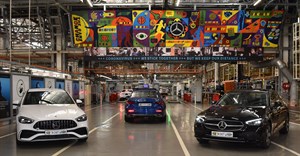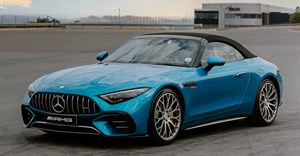
Subscribe & Follow
Jobs
- Publication Quality Controller Cape Town
- Experienced 3D Generalist/VFX Artist Johannesburg
- Creative Content Video Editor Johannesburg
- Printing Production Manager Polokwane
Iconic photography exhibition opens at Pretoria Art Museum
The exhibition, supported by BAHA Archive and South African Photographers, the Bailey Seippel Gallery and the Seippel Gallery, Johannesburg, is considered to be one of the most extensive showcases of modern South African history, told through the medium of photography.
Photographers such as Bonile Bam, Jodi Bieber, Pierre Crocquet, David Goldblatt, Bob Gosani, George Hallett, Alf Kumalo, Ranjith Kally, Peter Magubane, Gideon Mendel, Santu Mofokeng, GR Naidoo, Cedric Nunn, Mikhael Subotzky, Andrew Tshabangu, Paul Weinberg, Gille de Vlieg and Sam Nzima, as well as a number of Drum magazine photographers whose names are not known, provide their insights into life in South Africa over the past 60 years.
Art historian, Dr Ralf P Seippel, has curated this overview of South African culture and lifestyle from the 1950's to the present. Comprising mostly of black-and-white photographs, it gives an insight into South African society, politics, culture and economy, as well as the struggle for survival in the big cities. It shows how South Africa has evolved into the modern nation it is today.
Three historical periods
The exhibition is divided into three main periods, namely from 1950 to 1976 (apartheid), from 1976 to 1994 (struggle) and from 1994 to 2010 (freedom).
Photographs from the '50s and '60s published in Drum tell the story of life in the period of apartheid and reveal the naked truth of segregation. They also document sports events, the rise of football stars and the night life vibrating with jazz music and dancing feet.
Images from the '70s, such as Sam Nzima's iconic photograph of the wounded Hector Pieterson who was shot down by the police in Soweto on 16 June 1976, document the growing struggle and resistance movements that fought apartheid.
Photographs taken during the '80's and '90s highlight violent murders, demonstrations, the brutality of imprisonment and the fight for freedom.
Finally, photographers working in the 21st century show a South Africa of recovery and immense development, democracy and freedom, but they also show the work that still has to be done and the inequalities that remain. In the new South Africa everyone can vote, there is freedom of speech and gender equality allows women to demonstrate their strengths.
The exhibition is accompanied by a German/English catalogue of 160 pages published by Hatje Cantz and edited by Delia Klask and Ralf Seippel. Apart from the photographs in the exhibition the catalogue also features articles by Andries Oliphant, Luli Callinicos and Wiebke Ratzeburg.
"On a global level, Daimler has been an avid promoter of arts and culture," said Dr Niefer. "As a company, both locally and abroad, we believe that business can only truly thrive when it operates in a healthy, sustainable social context. This exhibition provides a tableau of the most relevant social development period in South Africa."
The exhibition opened on 2 February.
















